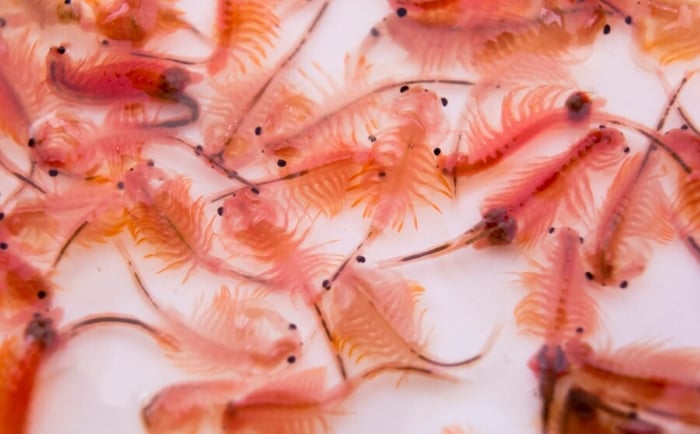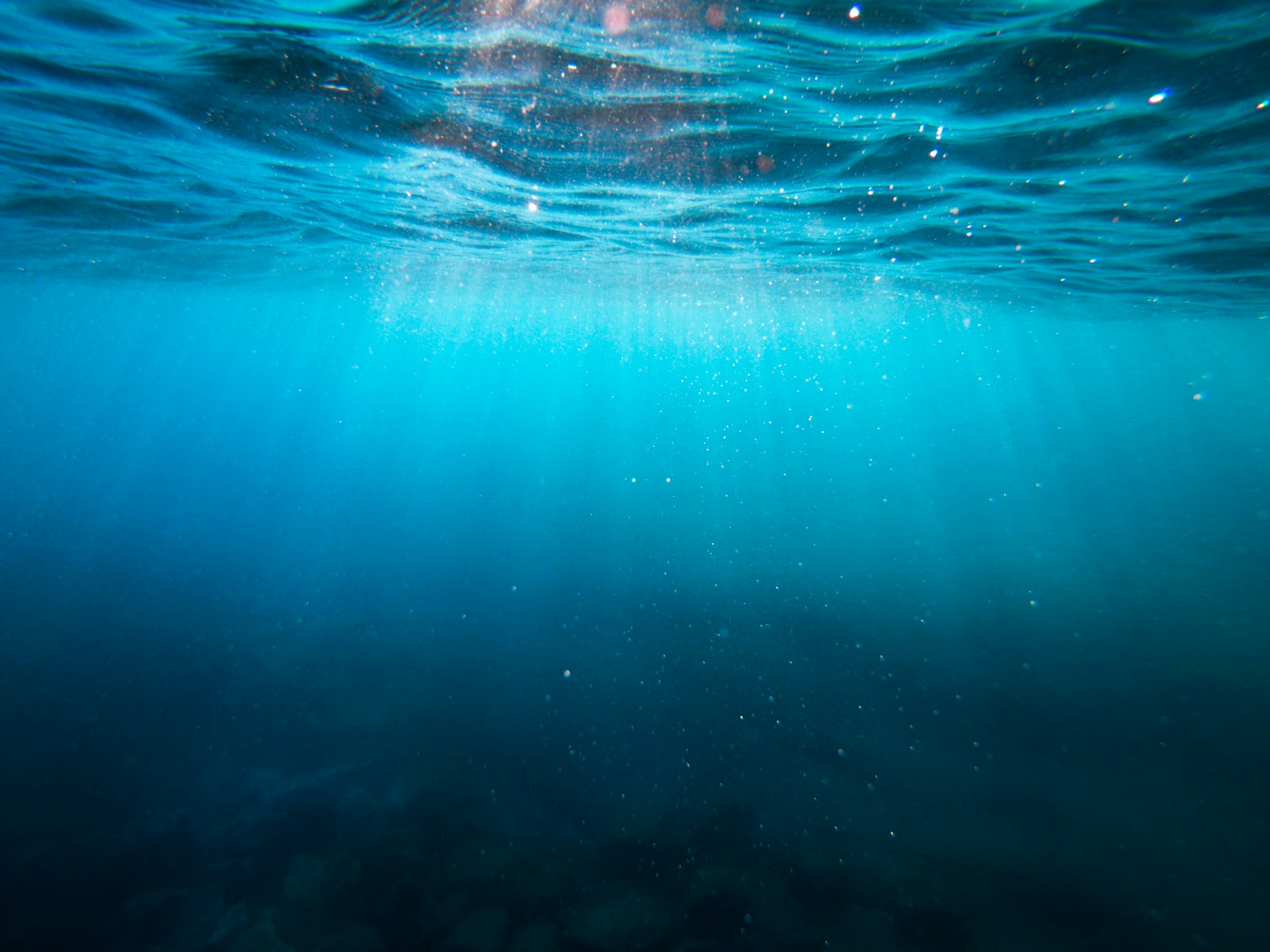Brine Shrimp (artemia) : Perfect food for your Reef Tank.
5/15/20255 min read


The Lifecycle of Brine Shrimp
Brine shrimp, known scientifically as Artemia, exhibit a fascinating lifecycle that includes several distinct stages: from egg to larva and finally to adult. The process begins with the eggs, which can remain dormant for long periods, often referred to as cysts. These cysts are remarkably resilient, allowing them to survive extreme environmental conditions including high salinity and low oxygen levels. When placed in optimal conditions—typically warm, salty water—cysts hatch within 24 to 48 hours, yielding tiny larvae known as nauplii.
The hatching process is heavily influenced by environmental factors such as water salinity, temperature, and light levels. Optimal salinity for hatching is often around 30 to 35 parts per thousand (ppt), and temperatures of 25 to 30 degrees Celsius facilitate rapid development. Moreover, light exposure plays a crucial role; nauplii are phototropic, meaning they are attracted to light, which aids in their feeding and growth. In a well-maintained home aquarium, enthusiasts often notice a bloom of nauplii swimming towards the light source, showcasing their adaptability and natural behaviors.
As brine shrimp grow, they undergo several molts, transitioning from nauplii to larger stages called metanauplii, then on to juvenile and adult forms. Throughout these stages, brine shrimp exhibit remarkable adaptability, able to adjust their life processes according to available resources and environmental stressors. For instance, they can adjust to varying salinity levels by secreting salts through specialized glands in their gills.
Personal experiences in observing the growth of brine shrimp can be particularly rewarding. Many aquarists witness the entire lifecycle firsthand, from hatching the cysts to nurturing them into thriving adults. Such interactions offer insight into their resilience and showcase the importance of providing suitable conditions for optimal growth in a home aquarium setting.
Hatching Brine Shrimp at Home
Hatching brine shrimp at home can be a rewarding experience, offering a steady supply of live food for your reef tank. To begin the hatching process, gathering the necessary materials is crucial. You will need a hatching vessel, which can be as simple as a clean glass jar or a specialized hatching kit designed for this purpose. A minimum capacity of two liters is recommended for optimal hatching results.
A reliable aeration system is essential for successful hatching. An aquarium air pump, coupled with an air stone, ensures adequate oxygenation and keeps the eggs suspended in the saline solution. Maintaining good aeration throughout the hatching process increases the likelihood of a successful hatch. For the saline environment needed for brine shrimp eggs, you should use non-iodized salt or marine salt mix that specifically caters to the needs of these organisms. A concentration of 30-35 grams of salt per liter of water is typically effective.
For the hatching solution, warm water around 25-28°C is ideal. To facilitate the hatching process, it is advisable to add a few drops of unscented liquid soap to the water, as this can help separate the eggs and prevent clumping. After preparing your setup, add the brine shrimp eggs, ensuring they are evenly distributed in the saline solution. It's beneficial to cover the vessel with a dark cloth or lid to create a dark environment, which mimics natural conditions and encourages hatching.
Common pitfalls to avoid include over aerating, which can cause an unsuitable environment for the eggs, or allowing the temperature to fluctuate. Additionally, it is recommended to hatch a small batch first before committing to larger quantities, as this will allow you to adjust your technique based on the outcomes. With patience and attention to detail, hatching brine shrimp eggs can yield fast results, providing a fantastic food source for your aquatic ecosystems.
The Benefits of Brine Shrimp in Reef Tanks
Incorporating brine shrimp into reef tanks offers numerous benefits that can greatly enhance the overall aquatic environment. One of the primary advantages of using brine shrimp is their exceptional nutritional value. Rich in essential fatty acids, proteins, and amino acids, they serve as a highly digestible food source for a variety of marine organisms, including fish, corals, and invertebrates. The nutritional profile of brine shrimp can significantly contribute to the vitality and health of reef inhabitants, promoting robust growth and enhancing coloration.
Moreover, the presence of brine shrimp stimulates natural feeding behaviors in fish. Many marine species exhibit instinctual feeding patterns that are triggered by the movement of live food. When brine shrimp are introduced into the tank, they create a dynamic feeding environment, allowing fish to chase and hunt their food, which can reduce stress and encourage more natural behaviors. This kind of engagement not only keeps the fish physically active but also promotes overall well-being, leading to a more vibrant and lively aquarium atmosphere.
Furthermore, brine shrimp contribute positively to the tank's ecosystem. Their production serves as a food source for various organisms, supporting the biological diversity within the reef tank. As a part of the food web, brine shrimp help maintain a balanced ecosystem. For instance, anecdotal evidence from reef enthusiasts illustrates that the introduction of live food, such as brine shrimp, has resulted in improved health and behavior of fish. Owners have reported significant increases in breeding success and improved interactions among species following the implementation of brine shrimp as a dietary staple.
These firsthand experiences reveal the practical benefits of integrating brine shrimp into reef tanks, showcasing their role in not only providing nourishment but also enhancing the overall harmony of the aquatic environment.
Advantages of Feeding Brine Shrimp to Your Reef Aquarium
Brine shrimp, often regarded as a staple in the diet of many marine aquariums, offer numerous advantages that make them an exceptional choice for reef enthusiasts, whether they are seasoned aquarists or novices. One of the primary benefits of incorporating brine shrimp into your reef tank is their high protein content, which is essential for the growth and development of many aquatic species. This nutrient-rich food source supports robust fish health, enhancing growth rates and promoting vibrant coloration among reef inhabitants. Fish that thrive on live food, such as brine shrimp, often exhibit more active and natural behaviors, contributing to a dynamic and engaging aquarium environment.
Another significant advantage of brine shrimp is their ease of culture. Aquarists can cultivate brine shrimp at home with minimal effort, making them an accessible food source. With just a simple setup of seawater, air supply, and a few tablespoons of cysts, aquarists can produce an ongoing supply of live food. This convenience allows for a continuous addition of essential nutrients to the diet of aquatic species, fostering optimal health and vitality. Additionally, the ability to culture brine shrimp at home reduces dependency on commercial feeds, which may contain preservatives or artificial ingredients that are not ideal for marine life.
Brine shrimp's versatility further enhances their appeal; they can be offered in various life stages – from nauplii to adults – to cater to the dietary needs of different fish species and other reef tank inhabitants. Personal observations indicate that fish fed live brine shrimp display dramatic improvements in growth, enhanced coloration, and increased activity levels during feeding times. In conclusion, the incorporation of live brine shrimp not only supports the health of reef aquarium inhabitants but also enriches the overall aquarium hobby experience, making it a rewarding choice for all those dedicated to maintaining vibrant marine ecosystems.
Buy your Brine Shrimp Eggs HERE.
Happy Reefing!

